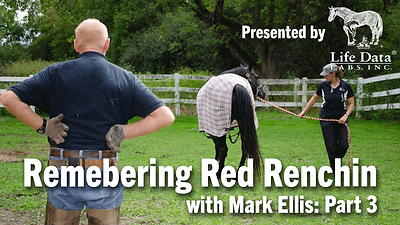A significant injury often ends a horse’s career, if not its life. If detected early enough, the injury could be prevented. Finding a link between injury and certain healing responses provides the element necessary to avoid severe injury, according to the University of Kentucky. With unanimously approved funding from The Kentucky Horse Racing Commission, scientists will study the presence of inflammatory and anti-inflammatory markers in injured and non-injured racehorses. The project will take place at the University of Kentucky Maxwell H. Gluck Equine Research Center.
Previously, scientists have looked at biomarkers, such as temperature or blood pressure, for indication of injury; however, that data isn’t reliable. Variables can cause differing results that have nothing to do with injury.
Researchers in the 2-year, $164,488 study, titled “Inflammation in Catastrophically Injured Thoroughbreds,” have been collecting samples from several different racetracks in various states. Allen Page, principal investigator and scientist/veterinarian at the Gluck Center, recently spoke with regulatory racing veterinarians to encourage additional participation in the study, as the ultimate goal is to sample 150 catastrophically injured horses, as well as approximately 1,000 non-injured horses, from across North America.
David Horohov, the co-principal investigator and Gluck Center director and Department of Veterinary Science chair, touches on the survey sample of the horses.
“By using non-injured horses from the same race, as well as horses in the general racing population, we anticipate identifying patterns of inflammation which may be indicative of a specific injury type,” says Horohov. “This may then be of use in the future to help identify horses that need additional examination before a race.”
In looking at horses that are both injured and not, scientists can examine the presence of white blood cells (WBC), or better yet, messenger ribonucleic acic (mRNA), the building-blocks of proteins within the blood cells. In the horses that are uninjured, the WBC count will be normal. In the injured horses, the count will be higher; therefore, scientists can more closely examine the mRNA in these injured horses’ cells.
Allen Page speaks on the science of the project. “Our theory is that these [white blood] cells pass by areas of bone or soft-tissue damage, which are activated by the damage, and begin producing inflammatory or anti-inflammatory mRNA, which we then measure,” Page explains. “Based on this, our hypothesis for the study is that those Thoroughbred racehorses that experience a catastrophic injury while racing will have evidence of increased inflammation when compared to non-injured horses.”
At the earliest indication of inflammation, scientists can look for these mRNA markers to prevent further damage to the horse. Furthermore, this research could aid in identifying injury patterns and specific injury types. This single-blood-sample test is important for the horse racing world since the past two decades have yielded work in this area, but the data is not widespread enough. With this simple test, more owners can invest in the safety and wellbeing of their horse.







Post a comment
Report Abusive Comment